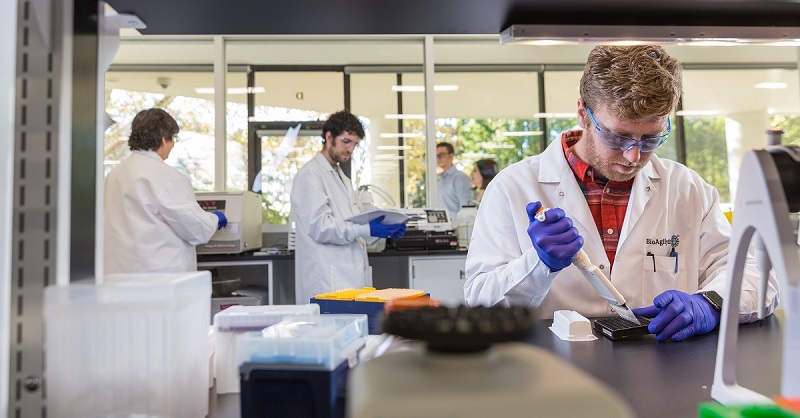The testing of impurities – materials in biologics not related to the active form – is essential to evaluate critical quality attributes and ensure product safety before administering biologic drugs. Even in trace amounts, impurities can interact with the therapeutic protein in a way that blocks or compromises its availability, activity, safety and potency, leading to loss of efficacy or safety issues. They can also exaggerate the drug’s bioactivity in an uncontrolled way or themselves induce physiological responses, ultimately resulting in potential adverse events. The methods used to identify and quantify impurities are therefore subject to strict regulatory requirements under GMP, and must consider the impact of both process-related impurities and host cell-related impurities on the final product.
Process-related impurities are the result of residuals of agents needed in the process but not completely eliminated by the manufacturing processes. In upstream (fermentation) processes, media components added to grow the cells for expression and production processes, chemical additives such as anti-foam and reducing agents used during harvesting, and agents leaked from these materials, or leachables, can all be a source of impurities. The majority of these impurities are removed during downstream (purification) processes, but testing methods should be in place to ensure they are not found in the final drug materials, or at minimum in amounts that will not impact patient safety.
Host cell-related impurities are those that are introduced while using cultured cells to express and produce biologic drugs. This includes host cell proteins (HCP) and host cell DNA. Like process-related impurities, host cell-related impurities are cleared through the downstream drug purification process. However, unlike process-related impurities, host cell proteins and host cell DNA are heterogeneous, multi-component analytes requiring complex and sensitive methods, which makes testing and quantification of the analytes challenging.
Bioanalytical Methods for Host Cell-Related Impurities Testing
Due to known instances of immunogenicity issues from host cell proteins, WHO sets an acceptable dose limit of 100 ng/mg (100 ppm) for host cell proteins in biologic drugs. Similar to host cell proteins, WHO and FDA recommend an acceptable limit of 100 pg/dose – 100 ng/dose for host cell DNA in biologic drugs.
Typically, impurities assays are developed with physical chemical methods, i.e. HPLC, or via ELISA methods. Due to the heterogeneous nature of HCPs in the biologic drug, the profile of HCP species at the end of each manufacturing process is different from that of the intact host and at various points across a process. HCP method development must, therefore, be closely tied to process development. An appropriate HCP method should have enough heterogeneity of the antibody reagent that can capture a majority of the HCP species from the desired process. This capture method should be in a reasonably linear relationship to make the method acceptable and quantification values reportable. For these reasons, the use of a sandwich ELISA is the current gold standard for host cell protein testing today. Often assays begin using commercially-available reagents but migrate to custom reagents to accommodate the unique nature of the HCP composition associated with each process and product.
Putting Phase-Appropriate HCP Methods in Place
It is critical to use representative materials from the desired process in HCP method development, qualification, and validation, as well as any custom reagent generation. Changes in manufacturing processes – including scale up – can tip the balance between the HCP analyte and the antibody reagent from the method, which makes it necessary to re-evaluate the status of the HCP method and may require re-development and/or re-qualification/re-validation. Knowing when and how to put a phase-appropriate HCP method in place is important to support process development, clinical lot releases, process performance qualification, and agency filing.
GMP Experience Matters
Because of the complexities involved in the development and validation of impurities assays, intensified by the pressure of stringent regulatory oversight, choosing a bioanalytical partner with deep scientific and GMP expertise to perform impurities testing is of the utmost importance. BioAgilytix has extensive experience in ELISA methods and our scientists have worked first-hand on both kit-based and custom HCP methods to support process optimization, release testing, and process clearance. We also bring expertise working with various impurities kits and have performed cell-based and non-cell-based impurity method qualification/validation under GMP – including both quantitative and limit test methods following ICH guidelines. Having a range of detection modes for ELISAs available during development also provides an advantage to adapt to the demands of matrix interference and sensitivity challenges. This gives our customers the confidence that the purity and quality of their drug substance or final drug product is accurately monitored to ensure safe delivery to patients.
—
In our first blog in our series on GMP, we explored the inherent complexities that come with developing and validating cell-based potency assays. Next we’ll explore bioanalytical considerations and best practices for stability testing. In the meantime, you can speak to one of our scientists to learn how we can support your product release with proven expertise and the appropriate bioanalytical services.
